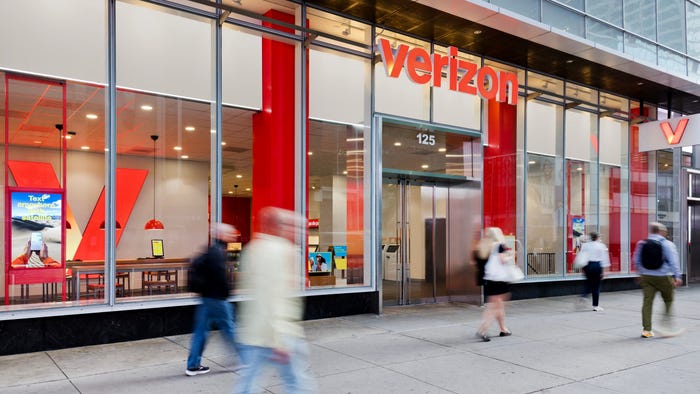FirstNet users will have access to 5G, but Band 14 will remain on 4G LTE for years, AT&T’s FirstNet lead saysFirstNet users will have access to 5G, but Band 14 will remain on 4G LTE for years, AT&T’s FirstNet lead says
.jpg?width=1280&auto=webp&quality=95&format=jpg&disable=upscale)
FirstNet users will have access to AT&T’s 5G services that are set to be available nationwide by the middle of next year, but the 700 MHz Band 14 spectrum will continue to leverage 4G LTE for years to protect public-safety device investments and key functionality, according to the leader of AT&T’s FirstNet team.
Chris Sambar, AT&T’s senior vice president for the FirstNet program, said that public safety should have access to 5G on AT&T’s commercial spectrum, but the FirstNet core network needs to be upgraded to enable this.
“The first thing that has to happen to enable the FirstNet network to be 5G-capable is we have to upgrade the core,” Sambar said during an interview with IWCE’s Urgent Communications conducted at the APCO 2019 event last month. “Once we’ve upgraded the core, then—if you have a FirstNet device that’s 5G-capable and the FirstNet core is 5G-capable—you can access 5G, period.
“That is contingent on discussions between us and the FirstNet Authority, and their reinvestment process.”
FirstNet Authority board Chairman Ed Horowitz has identified upgrading the FirstNet core to enable 5G support as one of the priority for the organization’s reinvestment efforts. FirstNet Authority board members could approve the investment as soon as this month, according to numerous sources.
As AT&T is building out Band 14 nationwide, the wireless carrier simultaneously is upgrading its network infrastructure to equipment that can support 5G services on spectrum below 6 GHz with a software upgrade, according to AT&T officials. While AT&T is targeting millimeter-wave 5G deployments to serve specific enterprise needs, 5G on spectrum below 6 GHz is expected to be available nationwide in the middle of 2020.
FirstNet users investing in 5G devices will be able to take advantage of this upgrade on AT&T’s commercial spectrum, but the 20 MHz of 700 MHz Band 14 airwaves licensed to the FirstNet Authority will remain on 4G LTE for years, Sambar said.
“Taking Band 14 itself and turning it into 5G spectrum, we don’t have a timeframe to do that,” Sambar said. “Honestly, I don’t think that’s a priority right now. I think that public safety having access to 5G is one thing, but which spectrum band they get access on is another.
“I think having that pristine, clear Band 14 block dedicated for them on [4G] LTE, in the near term, is the right decision. The FirstNet Authority agrees with that, as well.”
There are economic and technical reasons for continuing to provide 4G LTE services on Band 14, according to Sambar.
“If you flip all of Band 14 to 5G, then you’ve got device issues, because you’ve got first responders that don’t have the money to upgrade their devices [from 4G to 5G] really quickly,” he said. “So, we would have a whole embedded base that can only access Band 14 on 5G, and that wouldn’t be a good decision.”
In addition, public-safety officials have expressed a desire to used standards-based solutions for first-responder-centric functionality. Many of these key standards have been established in the 4G LTE environment, but similar standards have not been finalized for 5G—generally considered as LTE Release 15 and beyond.
Work is being done to address these standards that are important to public safety, but it will take some time before all of them are approved for 5G and equipment is available commercially to deliver these capabilities, Sambar said.
“Priority, preemption, MCPTT, LTE broadcast, Z-axis [location capability]—all of those features that we’re building out—none of that exists on 5G right now,” Sambar said. “You can’t take Band 14 and switch it to 5G, when there are no standards for any of the features on it. It’s going to be years down the road.”
Given this, Sambar said that public safety should consider the best ways to leverage 5G as it becomes available but encouraged first-responder representatives to make their investment evaluations based on factors beyond the widespread marketing hype associated with the new wireless broadband technology.
“I love 5G—it’s great,” Sambar said. “But, to be quite honest with you, for public safety, they need to stay focused on ‘Here are the core features that we want on our network for us to be able to do our jobs efficiently and effectively.’
“5G’s great, but be careful of the marketing spin around 5G and focus on what really works day to day. Right now, that is LTE with the 3GPP features that are on LTE.”
For more information about 5G, IWCE will host a webinar entitled “The 5G Ecosystem: What’s Real and What’s Hype?” on Thursday that will begin at 2 p.m. Eastern time. Registration for the event is free and can be completed at: https://government.informaengage.com/5G-Webinar-Series?code=WEB.





